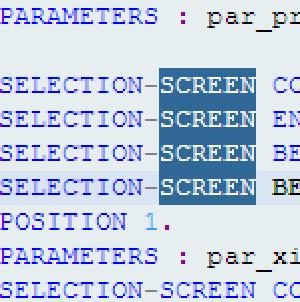Automatic variants in reports

When developing a report with a selection screen it is very annoying that every time we test it we have to input the test data to the selection screen. We usually end up creating a variant of the test to save us from this hassle. But, every time we run the report we still have to manually call this variant. Here is a simple way to automatically call a variant. This code can be inserted into the INITIALIZATION event during the development of the program:















